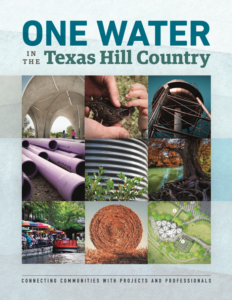
Federal infrastructure funding, new local resources offer a historic opportunity to build a water-secure future for the Texas Hill Country
Staff Reports
AUSTIN — The passage of the federal infrastructure package will deliver more than $2.9 billion for water infrastructure improvements in Texas.
When combined with the recent release of a Hill Country-specific guide to integrated water planning, Central Texas faces a pivotal moment in ensuring the fast-growing Hill Country builds a more sustainable water future.

“The Texas Hill Country is home to three of the top five fastest growing counties in the U.S.,” said Katherine Romans, executive director of the Hill Country Alliance and co-author of the new guidebook. “A business-as-usual approach to development–with its associated high demands on limited water resources–spells disaster for the future of our region. Now is the time to invest in system upgrades, build water-smart, and engage in community-based, conservation-focused water management. The future of our economies, our quality of life, and our Hill Country depends on it.
“Unprecedented growth and increased climate variability threaten the long-term resilience of the Hill Country’s water supply,” said Jennifer Walker, deputy director of the National Wildlife Federation’s Texas Coast and Water Program and co-author of the new guidebook. “Planners and developers facing similar pressures around the world have developed new strategies and technologies centered on water reuse, collection, treatment, and integrated management that are now ready for wide-scale deployment in the Hill Country. New funding sources such as the federal infrastructure package should provide the critical capital needed to break ground on these projects. We are at a tipping point. Community leaders in the Hill Country need to seize this moment to secure the region’s water future.”
Co-produced by the Hill Country Alliance and the National Wildlife Federation, the new resource book draws on an increasingly popular practice of integrated water management known as One Water. Strategies advocated by One Water proponents include:
- the use and reuse of water to expand water supplies;
- the collection, treatment and management of water close to its source; and,
- the pursuit of all opportunities to minimize buildings’ and communities’ overall water footprint.
The authors highlight fourteen examples of innovative water management projects from rural and urban communities throughout the Hill Country. These projects illustrate key strategies and technologies for communities, businesses, and organizations — both large and small — to develop water management approaches far better-suited to the on-the-ground realities of a changing Hill Country.
The full report, alongside further information on water planning in the Hill Country, can be found here.






